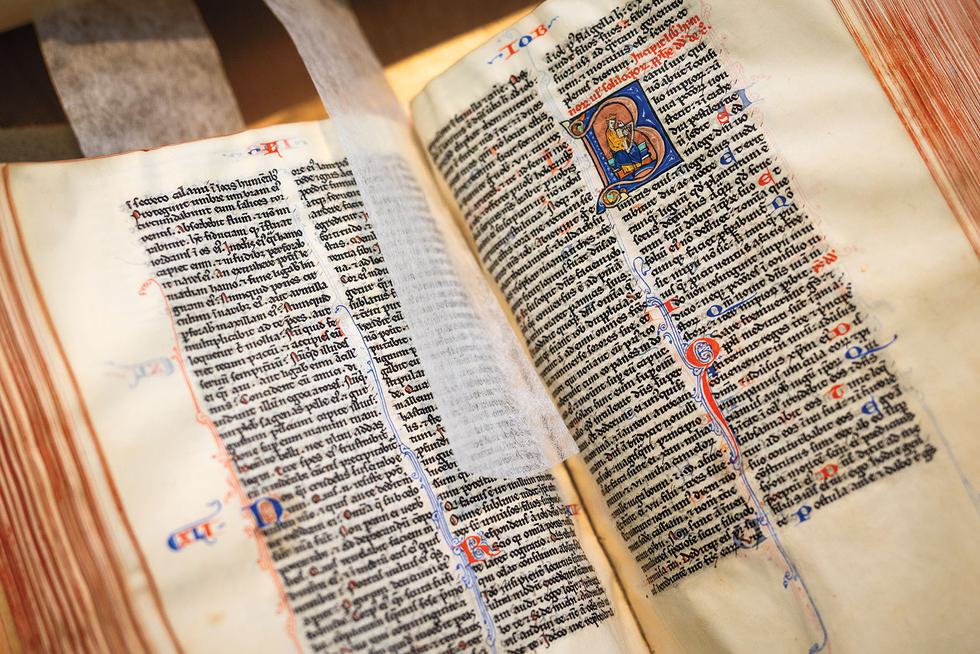The Davis Museum is fortunate to have Untitled (Bronze), an outstanding work by Dyani White Hawk. The mixed-media painting was acquired soon after it was made in 2019 and is on view in the newly reopened Davis Museum. White Hawk, who is Sičáŋǧu Lakota, is a 2023 recipient of a MacArthur Fellowship, often referred to as a “genius grant,” for transformative contributions to culture. Her multidisciplinary practice includes painting, sculpture, photography, and large-scale installations that have powerfully centered Indigenous identity and reframed the narrative of how abstraction has evolved in American art. Honoring the dynamic visual traditions of both functional objects and fine art, White Hawk proposes an intersectional version of American modern art with deep roots in Indigenous culture.
Detail
Untitled (Bronze) presents a geometric composition on a modestly sized canvas. Square fields of dark beads define four corners around a cross-shaped field of metallic bronze paint. Viewed up close, the surface reveals thin ribbons of paint applied horizontally. The careful lines defined by the artist’s tool are both precisely repetitive and also imbued with the human rhythm of her hand moving across the canvas. At each corner, alternating vertical bands of small, stacked seed beads and elongated, twisting bugle beads have been tightly stitched onto the canvas to create another striped pattern. The dark glass beads glitter gently and insist on a material presence not typically found in the flat surfaces of minimal, modernist painting. White Hawk extends her abstract vocabulary to the edge of the canvas, where she activates the perimeter with dark purple paint.
The deceptively simple geometry and limited palette of the overall composition reveal a complex drama of form and meaning as the viewer engages with the work. During the 19th century, European seed beads became a trade item and provided a readily available alternative to the porcupine quills Lakota artists used to create intricate symbolic patterns on ceremonial and functional objects. Quillwork remains an active art form—White Hawk incorporated the labor-intensive skill in some of her early work, and has also used brushstrokes to evoke the softly variegated color and line structure of quillwork in her painted canvases. In Untitled (Bronze), the seed beads, and especially the vertical bugle beads, imbue the painting with the long history of Lakota quillwork, as well as the intervention of European trade. White Hawk has purposefully brought this Indigenous art form into the space of Western easel painting not only because it invests the work with her own identity and Lakota worldview, but also because its presence provides a potent way of critiquing limited histories of modern art that have overlooked Indigenous contributions to abstract art. Untitled (Bronze) powerfully communicates these inseparable histories and the significance of abstraction as a force in many cultures.




Post a Comment
We ask that those who engage in Wellesley magazine's online community act with honesty, integrity, and respect. (Remember the honor code, alums?) We reserve the right to remove comments by impersonators or comments that are not civil and relevant to the subject at hand. By posting here, you are permitting Wellesley magazine to edit and republish your comment in all media. Please remember that all posts are public.